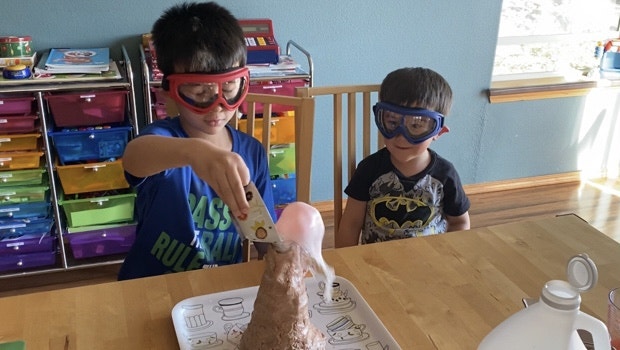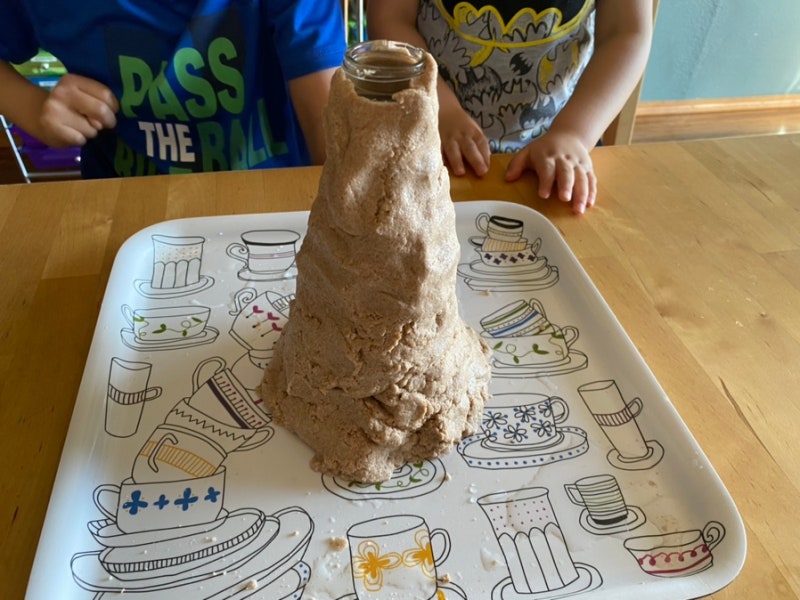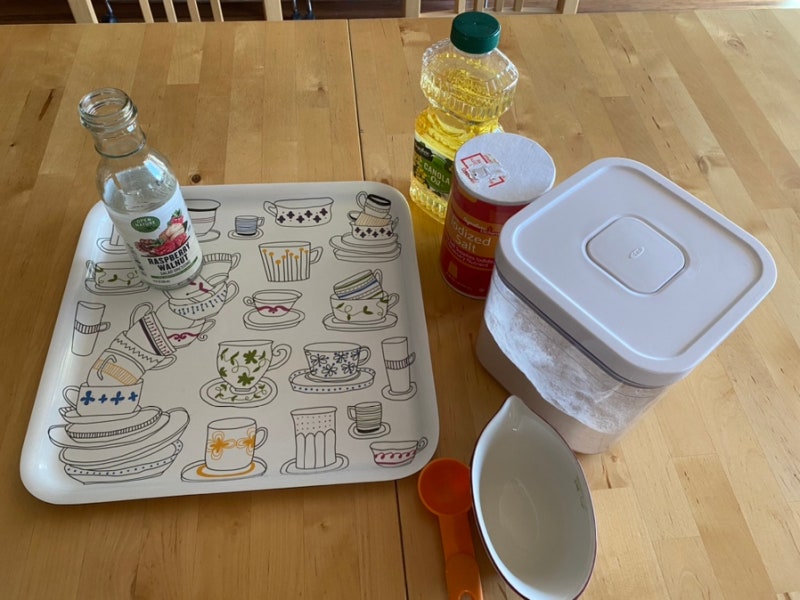Hello. This is a blog about the daily lives of American fathers, Korean mothers, first-year elementary school Chris, and free school Eden in Washington, D.C.The other day, I did a balloon blowing science experiment using baking soda and vinegar.

[Home Infant/Elementary Science Experiment] Baking soda & vinegar balloon science experiment using baking soda + vinegar Hello, American father living in Washington, USA, Korean mother, elementary school 1 Chris, free school Eden’s daily life… m.blog.naver.com

Today, we prepared a wonderful volcanic eruption experiment using the same principle. Before the experiment, Chris first read the National Geographic Kids Volcano Volcanoes book so that he could have background knowledge, but I think you can selectively add this part. Even if it’s not the same book, if you don’t have a book or a book that helps you understand volcanoes, you can look for information on the Internet.

What’s interesting about today’s experiment is not just observing volcanic eruptions, but also adding activities for children to create volcanoes themselves, so you can create volcanoes with your own wonderful personality. This experiment is explained in two main stages.Step 1. A glass bottle with a wide entrance to volcanic preparations, 3 cups flour, 1 cup salt, 1 tbsp cooking oil, 1 cup lukewarm water + (In the original experiment at the bottom, we used twice the ingredients. 6 cups of flour, 2 cups of salt, etc. But I thought 6 cups of flour was too much even though the glass bottle wasn’t big, so I put the ingredients in half, and the volcano was slimmed down. Please adjust the amount according to the size of the glass bottle.)Please use the prepared ingredients to make the dough. All you have to do is feel like clay to some extent, so please adjust the amount of water by making dough. I put in half a cup first, then added half a cup again, and added a total of one and a half cups to make the dough.Our flour is grain flour, so the color is brown. It’s sticky to some extent, and after kneading it,Please help children build volcanoes around diseases. It’s easier to understand if you show me the picture first and then make it like this. By the way, we don’t like Chris to pick up (though I love Eden) so I made most of it and the kids finished it off. As I said above, after using only half of the ingredients, the dough was a little insufficient, so we finally made a slim volcano.Step 2. Prepare to experiment with volcanic eruptions 1 tbsp kitchen detergent 2 tbsp red pigment or watercolour baking soda 1 tbsp vinegarAdd a few drops of pigment and kitchen detergent to the prepared amount of water, mix, and put in a bottle.If you put 2 tbsp baking soda in a bottle and pour the prepared vinegar water, you can observe baking soda and vinegar meet and cause a strong chemical reaction, and liquid overflows like a volcano explodes.I repeated the experiment twice, but since it’s dinner time to do more, I decided to take you to one side and do it again tomorrow because the volcano was built instead of here. Since Chris is still a freshman, we don’t have basic knowledge of chemical formula, acidity, and alkalinity yet. Seeing that you start to get interested little by little through these experiments, it takes a lot of time to prepare a little bit and clean up the five-way heating table, but I’m still happy. It’s hard to stay indoors, but I think it’s a good opportunity to have a one-on-one class that suits your child.I recommend a wonderful volcanic eruption experiment made with materials at home!Today’s experiment was conducted by referring to the blog below.Learn how to make great volcanic science projects and how to make eruptive volcanoes! The volcano is made of salt dough, baking soda and vinegar lava. Perfect scientific experiment for children! teachbesideme.comLearn how to make great volcanic science projects and how to make eruptive volcanoes! The volcano is made of salt dough, baking soda and vinegar lava. Perfect scientific experiment for children! teachbesideme.com

